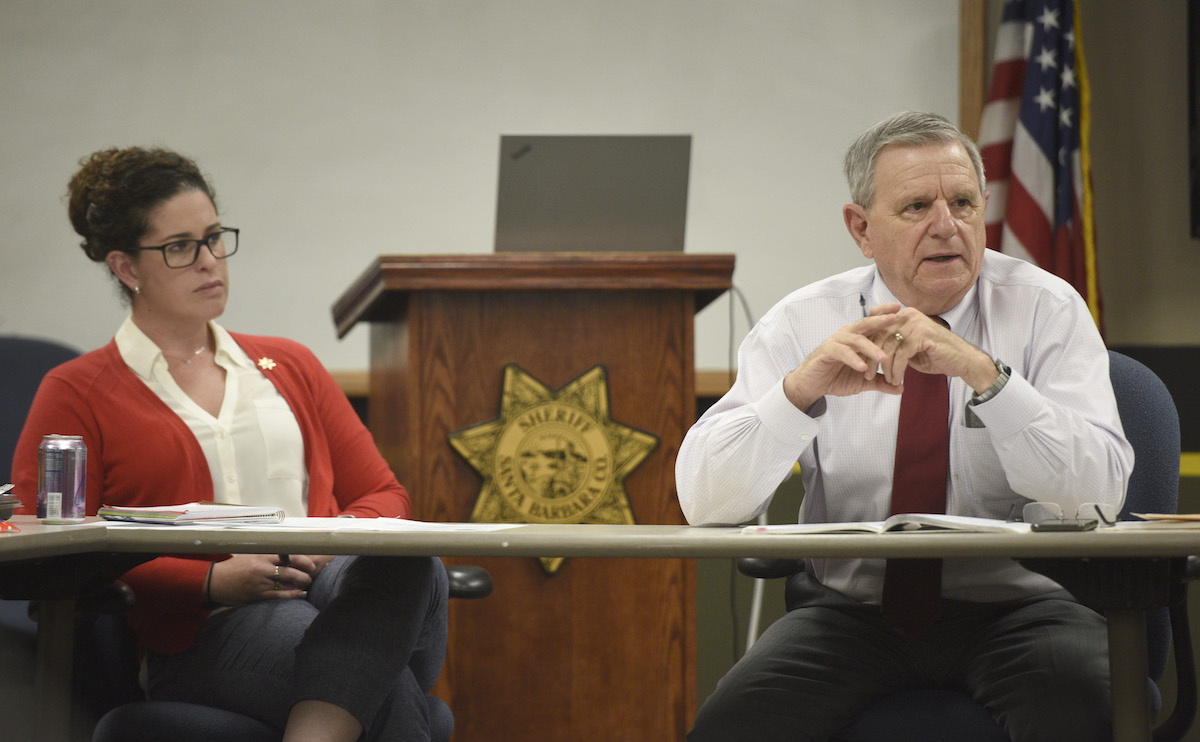Keeping Mentally Ill People Out of Jail
Fivefold Increase Projected in Co-Response Units

When discussing efforts to keep mentally ill people out of County Jail, high-ranking county administrator and former undersheriff Barney Melekian has been known to say, “We are in grave danger of accomplishing something.” This Monday, Melekian — charged with heading up this effort for County Executive Officer Mona Miyasato — went even further. “We really are on the edge of making a huge difference,” he said. Melekian’s comments came at the tail end of a Monday-afternoon gathering of mental-health professionals, mental-health advocates, and multiple stripes of law enforcement officialdom.
Though there was no shortage of friction between some of the key players involved with what’s been dubbed “Stepping Up,” most of the news imparted at the low-ceilinged training facility operated by the Sheriff’s Office was startlingly upbeat. A year ago, for example, there was only one “co-response unit” in all of Santa Barbara County: One law-enforcement professional was teamed up one crisis-intervention specialist working for the county’s Department of Behavioral Wellness. That number, it was announced Monday afternoon, will soon expand to five.
In the realm of mental-health care, that’s a very big deal. A year ago, the only co-response unit in the county was strictly a part-time effort — once a week every other week. It was also on financially shaky grounds. Last February, in fact, the sheriff pulled the plug on that project, citing staffing shortages and the competing demands by the department’s core mission.
The supervisors restored funding — however temporarily — in response to protests waged by mental-health advocates, not to mention some dramatic successes posted by the co-response unit itself. Grant funding has subsequently put the project on solid footing — at least for three years — and has allowed for new co-response units in Santa Maria and Lompoc. It was announced at Monday’s meeting that the Santa Maria Police Department is about to unveil a co-response effort of its own, meaning there could soon be two such initiatives serving Santa Maria. It also came out that the Santa Barbara Police Department has been quietly operating a co-response unit of its own for the past six months that few in the room knew about. All that brings the total number to five.
How all this plays out has yet to be determined, but according to Dr. Cherylynn Lee — who runs the sheriff’s Crisis Intervention Team training program — the county’s one co-response duo have responded to 394 calls for service and initiated 405 contacts of their own. Out of all those contacts, 66 individuals were placed on involuntary psychiatric holds and 59 agreed to have themselves checked into a psychiatric hospital. Sixty-four were taken to the county’s mental health crisis hub. Of the 78 who were eligible to be arrested, only seven actually were.
The program launched by the Santa Barbara Police Department reported that its co-response team has responded to 349 calls for service, conducting welfare checks, some involving potentially suicidal or homicidal subjects.
This data dump elicited much discussion about the need to establish baseline info against which future measurements can be compared. Such data will be crucial, Melekian stressed, when the grant funding expires three years hence and the county supervisors figure out how to allocate tax dollars. The program, he said, might be new to Santa Barbara County, but was hardly new. “Every place it’s ever been, jail populations have dropped and the time spent by police officers and mental-health professionals has been reduced.” Emergency rooms have similarly seen a drop off in volumes, as have emergency-medical and ambulance services.
The co-response program, however, was just one of many discussed — and debated — by members of the Stepping Up board. Mental-health advocate Lynne Gibbs touted the results achieved elsewhere by Assisted Outpatient Treatment (AOT) programs in which judges are empowered to order the treatment-resistant chronically mentally ill to get outpatient treatment. After three years, Gibbs noted, San Francisco’s AOT program reported an 88 percent drop in incarcerations and an 83 percent drop in expenditures in its patient caseload.
Gibbs pointedly noted that a report on Santa Barbara’s AOT program had been slated for Monday’s meeting, and expressed open skepticism and suspicion that the report was pulled from the agenda at the last minute. Behavioral Wellness director Alice Gleghorn has never embraced the coercive elements of the AOT program. In fact, she openly resisted its adoption by the county supervisors and continued to do so after it was apparent the program had majority support. Funding for the county’s program expires this June, and Gibbs and other mental-health advocates were hoping that the county’s own numbers would make a strong case for continued funding.
Gleghorn stated that the report’s author explained to her — at the last minute — that she didn’t have the data. Gleghorn also stated that she wouldn’t have released the data to the Stepping Up committee — or anyone else — until the county supervisors had seen it first, That, she said, wouldn’t happen until spring. This prompted Melekian — who chaired the meeting — to wonder how the report ever made it onto the Stepping Up agenda. Gleghorn had no light to shed. “No one contacted us,” she said. None of this satisfied Gibbs, who has crossed swords with Gleghorn over AOT in the past. If the numbers were available, she argued, they’d show the program saves the county more money than it costs. “Personally,” she said, “you’d have to be crazy not to keep it going.”



